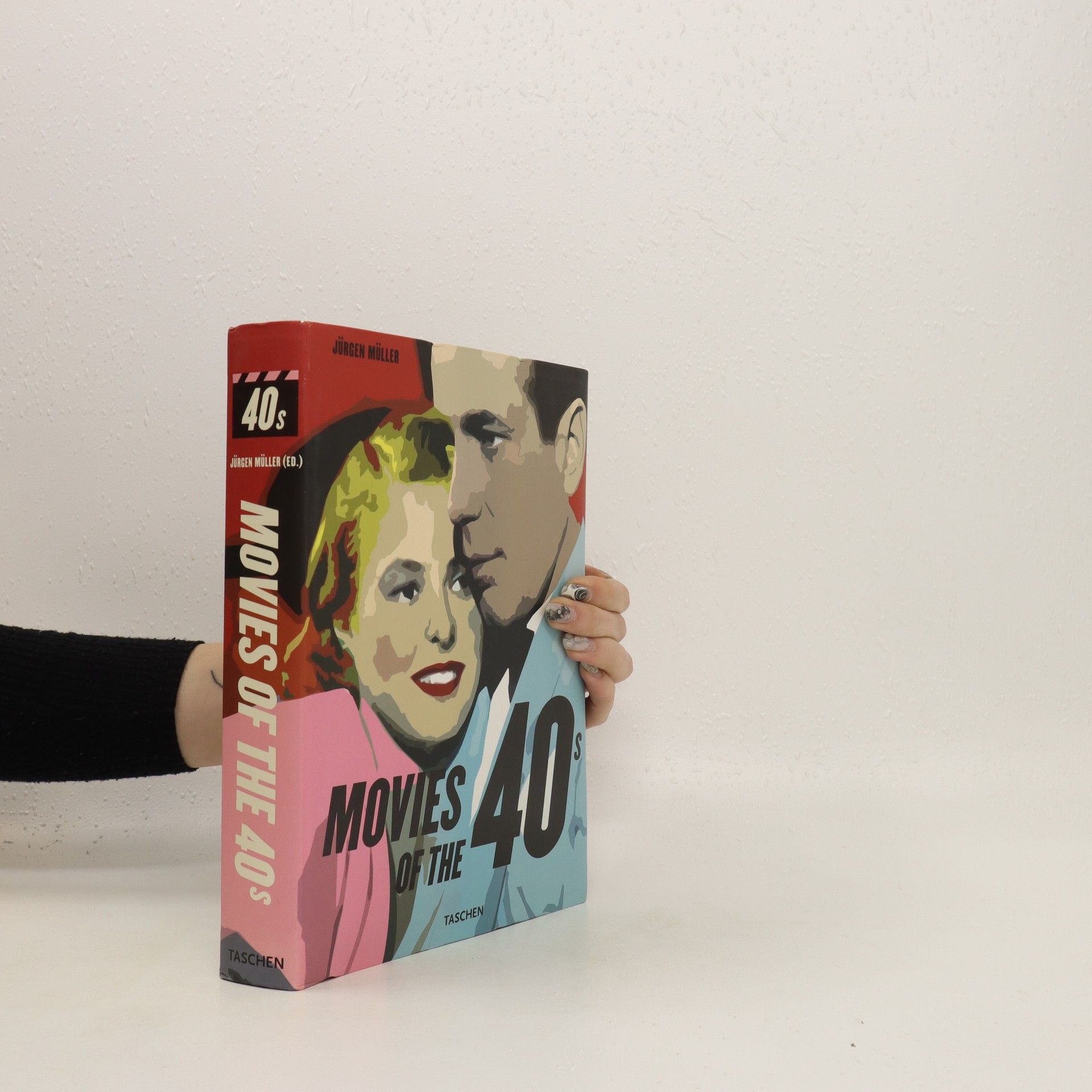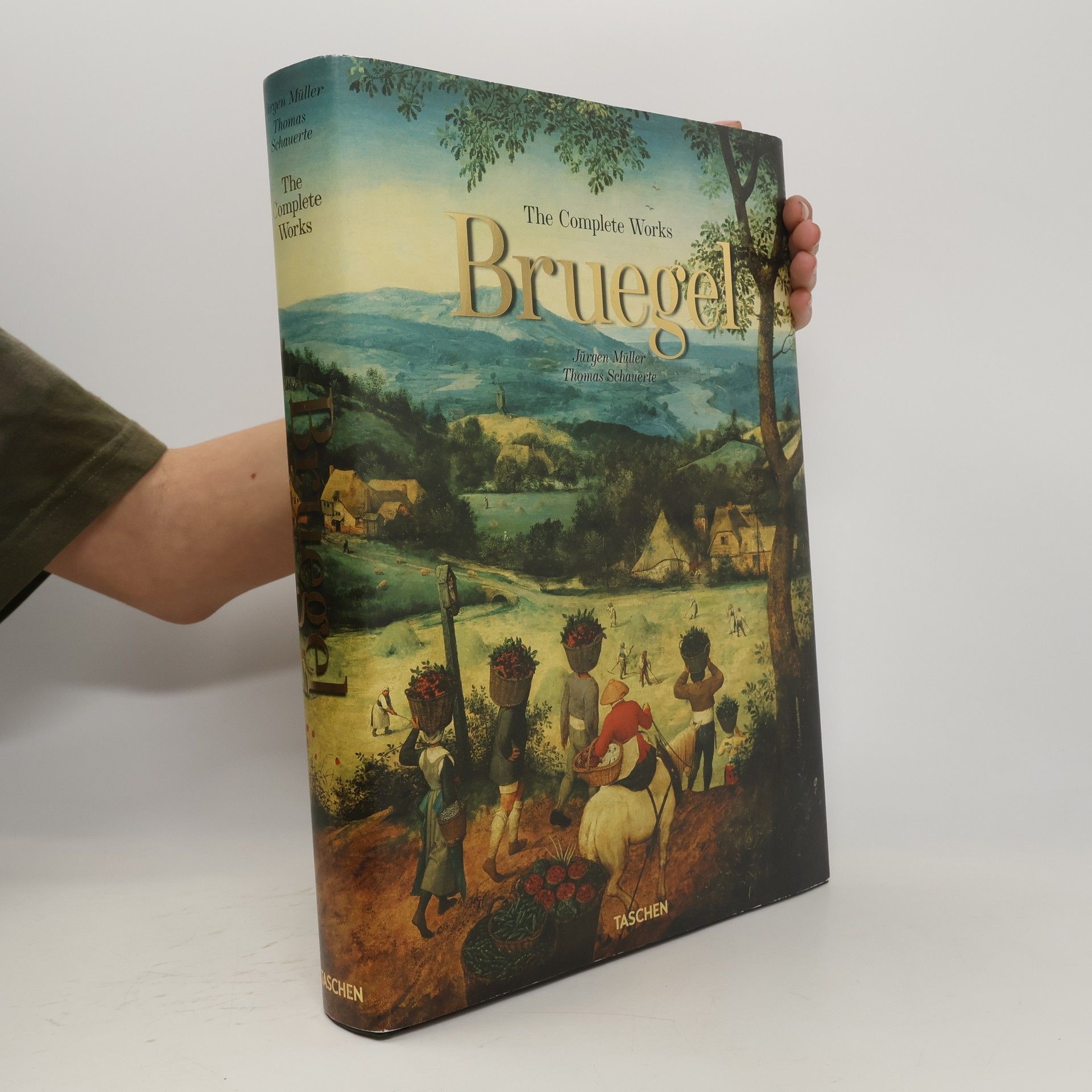Film noir
- 639 stránek
- 23 hodin čtení






Derived from the XXL monograph which saw TASCHEN undertake a comprehensive photographic survey of the artist's oeuvre, this compact edition explores Bruegel's 40 paintings through exceptional details and reproductions. We discover how, using his own pictorial language in scenes teeming with minutiae, Bruegel captured the theater of life.
Discover the complete works of Pieter Bruegel the Elder, the most significant artist of Flemish Renaissance painting. This XL monograph gathers all 40 paintings, 65 drawings, and 89 engravings--each piece a unique witness to both the religious mores and the close-knit folk culture of Bruegel's time.
So oft totgesagt wurde das Kino wohl noch nie. Tatsächlich hat sich in der Dekade der 2010er-Jahre viel verändert – sowohl, wie wir Filme sehen, als auch, wie wir uns selbst sehen. Soziale Medien und das Internet prägten eine neue Selbst- und Welterfahrung. Streaming-Dienste vervielfachten die Möglichkeiten des Sehens , Videospiele lockten mit eigenen Welten: Die große Leinwand bekam ernsthafte Konkurrenz . Schon bevor die gewohnten Zeitfenster zwischen Kinostart und Zweitverwertung immer enger wurden, sah sich der Film oftmals zu bloßem „Content“ degradiert, anzuklicken auf bunten Bildschirmkacheln. Bleiben dem Kino nur noch Starkult, Blockbuster und computeranimierte Schauwerte? Ganz im Gegenteil – schon ein erster Blick in unsere Anthologie zeigt ein überraschend vielfältiges, dynamisches und vor allem quicklebendiges Kino. Das letzte Jahrzehnt war filmisch alles andere als langweilig, eintönig und dem Aussterben geweiht. Und ehrlich: Würden Sie all die hier versammelten Filme gerne nur im Streaming sehen? Das Kino bleibt ein Sehnsuchtsort. Unser Band lässt Sie seinen starken Atem spüren. Jeder der 100 wichtigsten Filme der Dekade wird von dem Herausgeber Jürgen Müller und seinem Team von AutorInnen ausführlich erläutert und mit einer Fülle von Bildmaterial illustriert. Der Band umfasst Biografien von Schauspielern und Regisseuren, Einspielergebnisse, Hintergrundinformationen sowie eine ausführliche Liste der Oscar®-Gewinner von 2012 bis 2021 . Quentin Tarantinos Meisterwerk Once Upon a Time … in Hollywood (2019) wird für Jürgen Müller und Philipp Bühler in ihrer ausführlichen Einleitung zur perfekten Metapher für die Widersprüche und Ambivalenzen des heutigen Kinos. Dieser Band ist ein neuer Meilenstein für alle Cineasten und Filmliebhaber!
The 1970s: that magical era betwixt the swinging 60s and the decadent 80s, the epoch of leisure suits and Afros, the age of disco music and platform shoes. As war raged on in Vietnam and the cold war continued to escalate, Hollywood began to heat up, recovering from its commercial crisis with box-office successes such as Star Wars, Jaws, The Exorcist, and The Godfather. Thanks to directors like Spielberg and Lucas, American cinema gave birth to a new phenomenon: the blockbuster. Meanwhile, across the Atlantic, while the Nouvelle Vague died out in France, its influence extended to Germany, where the New German Cinema of Fassbinder, Wenders, and Herzog had its heyday. The sexual revolution made its way to the silver screen (cautiously in the US, more freely in Europe) most notably in Bertolucci's steamy, scandalous Last Tango in Paris. Amidst all this came a wave of nostalgic films (The Sting, American Graffiti) and Vietnam pictures (Apocalypse Now, The Deer Hunter), the rise of the anti-hero (Robert De Niro, Al Pacino, Dustin Hoffman), and the prestigious short-lived genre, blaxploitation.140 A-Z film entries include:- Synopsis- Film stills and production photos- Cast/crew listings- Box office figures- Trivia- Useful information on technical stuff- Actor and director biosPlus: a complete Academy Awards list for the decade
The 40s marked a pivotal decade for cinema, characterized by a blend of propaganda and escapist entertainment amidst global conflict. As directors sought to engage audiences during the pre-television era, a movement towards realism emerged in various countries. Italy's neorealism, exemplified by De Sica's Bicycle Thieves (1948), inspired filmmakers worldwide. In Hollywood, the decade represented an unparalleled creative surge, producing edgy and experimental films. Citizen Kane (1941), Orson Welles's groundbreaking debut, set the stage for the film noir genre, which featured romantic antiheroes and femmes fatales, becoming a defining aspect of cinema for many enthusiasts. The atmospheric black-and-white world of noir showcased stars like Rita Hayworth, Ava Gardner, and Lauren Bacall as timeless icons, while Humphrey Bogart epitomized coolness following his role in The Big Sleep (1945). Concurrently, another genre was reshaping America's identity: the Western. John Ford's films revitalized this genre, with Monument Valley symbolizing the nation's grandeur, and John Wayne emerging as the quintessential figure of the wild frontier. Together, these cinematic movements captured the complexities of the era and left an indelible mark on film history.
Cinema enters another Movies at the dawn of the third millennium Our groundbreaking movies by decade series continues with this new volume dedicated to the most interesting and important films made in the decade since the turn of the millennium. A decade characterized the rise of a new era in global politics and technology , the 2000s were most notably marked by September 11, 2001 and the ensuing wars in the Middle East, as well as the explosion of social networking and mobile computing. This comprehensive volume covers an inspiringly broad range of titles made during a unique period in history , from the fantastical special effects masterpieces Lord of the Rings, Inception , and the 3D film Avatar ; to entertaining fare such as the Bourne action films, the Harry Potter series, Moulin Rouge, Borat , and Inglourious Basterds ; socially and politically conscious cinema including Hurt Locker, Babel, Bowling for Columbine, and City of God ; and art-house standouts such as Brokeback Mountain, Mulholland Drive, Dogville, Talk to Her, No Country for Old Men, and Black Swan . If indeed we are approaching the end of cinema—it can be argued that the 2000s were the last decade of cinema as we knew it , before technology altered it beyond recognition and the movie theater was superseded by the computer screen—then this study is both a celebration of moviemaking and an elegy for a soon-to-be-lost art.
From horror to musical, noir to slapstick, adventure to tragedy and western to new wave, all genres are represented in this wide-ranging and fun compendium.
From film noir to grandiose musicals, blonde bombshells to UFOs: the movies of the 1950s heralded a new era in filmmaking. This compendium presents the most influential and successful films of a time when conical bras, sideburns, and 3D movies were all the rage. Whether you're a rebel without a cause or a gentleman who might prefer blondes, ...
Jürgen Müller's overview of the films of the 1960s has over a hundred A to Z entries that include synopses, film stills, cast and crew listings, box office figures, trivia and actor and director biographies. The book covers examples of Italian, French, German and American movies that strongly characterized the 1960s.